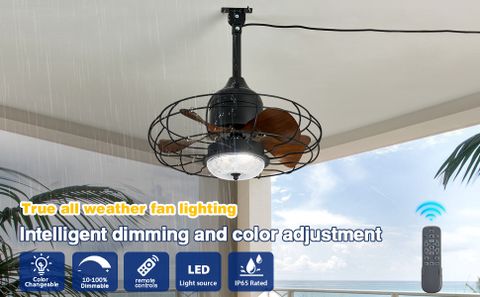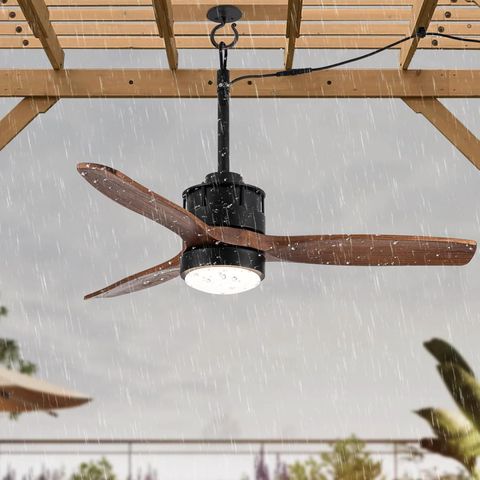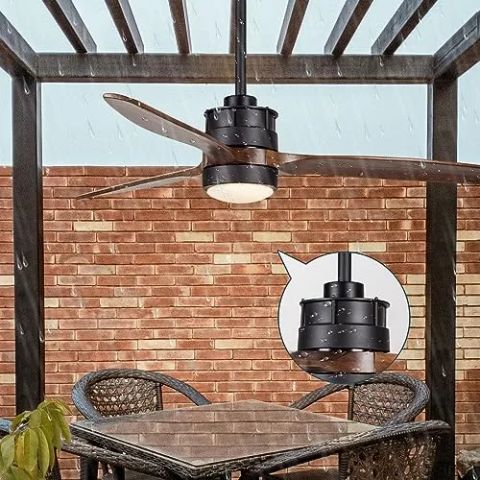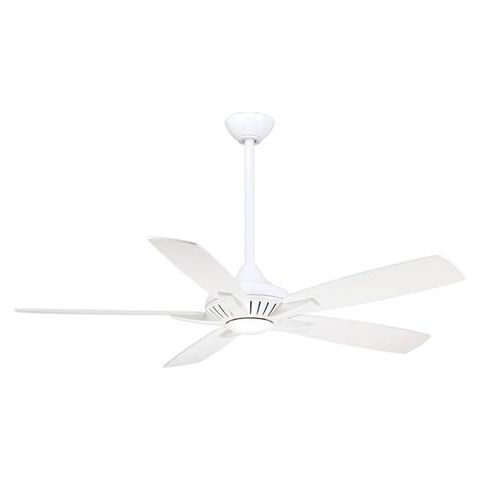Picture this: You’re in a tropical paradise, surrounded by lush greenery and gentle breezes. But then you notice your ceiling fan starts to rust, its blades warp, and the motor gives up the ghost. Sound familiar? That’s exactly why selecting the right ceiling fan for high humidity environments matters more than you might think.
Humidity can be a real nemesis for ceiling fans, especially those not built to handle moisture. Whether you live near the ocean, in a rainy climate, or just have a bathroom that gets steamy after every shower, you’ve probably wondered if there’s a better way to stay cool and comfortable. The truth is, not all fans are created equal when it comes to fighting off humidity. Some are designed to take on the challenge, while others will crumble under pressure. So how do you choose which one will stand the test of time in your moist environment?
Understanding Humidity’s Impact on Ceiling Fans
When humidity levels soar, it’s not just your skin that feels sticky—it’s your ceiling fan too. Moisture in the air acts like a slow-motion destroyer, causing metal components to corrode, wood to swell, and electrical parts to malfunction. Imagine your fan blades turning in a foggy room, each spin adding another layer of damage. This isn’t just about aesthetics; it’s about safety and longevity.
The problem becomes even more pronounced in coastal areas where saltwater spray meets indoor air. Salt accelerates corrosion faster than plain water does. Even in less extreme cases, regular exposure to high humidity slowly degrades materials over time. A fan that looks brand new today might start creaking and wobbling within months if it’s not properly rated for the conditions.
Think of it this way: a fan meant for dry climates is like a car that’s never been driven in snow—it’s perfectly fine until you try to use it in winter conditions. The difference is that once a fan fails in humid conditions, it often requires complete replacement rather than simple maintenance.
Key Features to Look For in High Humidity Fans
Not all ceiling fans are built the same way. When shopping for a fan that can handle high humidity, focus on these critical features:
• Weatherproof rating: Look for fans labeled as "outdoor" or "marine-grade" for maximum protection against moisture
• Corrosion-resistant materials: Aluminum, stainless steel, or plastic components resist rust better than regular metals
• Sealed motors: These keep moisture out of the internal mechanisms that power your fan
• Water-resistant finishes: Special coatings protect surfaces from moisture damage
• Proper mounting hardware: Stainless steel or coated fasteners prevent rust at attachment points
A fan with these characteristics is like having a protective shield around your investment. For instance, marine-grade fans are specifically designed to withstand salt spray and constant humidity, making them ideal for beachfront homes or bathrooms with heavy steam usage.
Material Matters: What to Choose for Moisture Resistance
The materials used in building a ceiling fan play a crucial role in its ability to survive humidity. Here’s what you should know:
Aluminum components are excellent choices because they don’t rust like steel does. They’re lightweight yet strong, making them perfect for outdoor installations or humid indoor spaces.
Stainless steel offers superior durability, though it’s more expensive. It’s particularly good for coastal areas where salt exposure is a concern.
Plastic parts can be effective when they’re high-quality and UV-resistant. They won’t rust but may fade over time with sun exposure.
Wood blades require special treatment and sealing to resist swelling and warping. Even then, they’re generally not recommended for high-humidity areas unless they’re specifically designed for such conditions.
Consider a fan with a combination approach—aluminum or stainless steel blades with plastic or sealed motor housing. This hybrid strategy gives you the best of both worlds: strength and protection.
Motor Types and Their Humidity Performance
The heart of any ceiling fan is its motor, and that’s where things get interesting when dealing with humidity. There are several types to consider:
AC motors are common and reliable but may struggle with moisture if not properly sealed. Look for models with sealed bearings and waterproof ratings.
DC motors often perform better in humid conditions because they generate less heat and typically come with better sealing.
Brushless DC motors represent the cutting edge, offering energy efficiency and excellent moisture resistance. They’re more expensive but worth it if you’re in a very humid area.
The motor’s location matters too. A motor that sits inside the fan housing needs extra protection. Check if the manufacturer specifies moisture resistance ratings for their motor components.
Real-world experience shows that fans with sealed motors last significantly longer in humid climates. One homeowner reported that her old fan with an exposed motor failed after just six months in a bathroom with high humidity, while a new model with a sealed motor has been running smoothly for three years.
Installation Considerations for Humid Environments
Even the best fan will fail if installed incorrectly, especially in humid conditions. Here are essential installation tips:
• Mounting location: Avoid installing fans directly above showers or tubs unless they’re specifically rated for such locations
• Ventilation: Ensure adequate airflow around the fan to prevent moisture buildup
• Proper clearance: Leave enough space between the fan and any wet surfaces
• Quality mounting hardware: Use stainless steel screws and brackets designed for humid conditions
• Professional installation: Consider hiring someone experienced with humid environment installations
Many people think they can install a fan themselves, but when it comes to high humidity, professional expertise can save you money and frustration later. A poorly mounted fan can lead to wobbling, noise issues, and even safety hazards.
Remember, a fan that’s perfectly balanced in dry conditions might become unstable in humid weather due to material expansion and contraction. Proper installation accounts for these changes and ensures long-term performance.
Maintenance Tips for Longevity in Humid Climates
Regular care is essential for keeping your ceiling fan running smoothly in high humidity. Here’s what to do:
• Clean regularly: Dust and moisture accumulate faster in humid conditions, so clean every 2-3 weeks
• Check for corrosion: Look for signs of rust or discoloration on metal parts
• Tighten loose parts: Humidity causes materials to expand and contract, loosening connections over time
• Lubricate moving parts: Use appropriate lubricants recommended by the manufacturer
• Inspect wiring: Check for any signs of moisture damage or wear
A simple monthly routine can extend your fan’s life dramatically. Many users find that cleaning their humid climate fans with a slightly damp cloth and mild soap helps remove moisture buildup and prevents mold growth. Also, consider using a dehumidifier in rooms with particularly high humidity to reduce overall moisture levels.
Don’t underestimate the importance of preventive maintenance. A few minutes of care each month can save you hundreds of dollars in repairs or replacement costs.
Choosing a ceiling fan for high humidity environments isn’t just about picking something that looks nice—it’s about making a smart investment in your home’s comfort and safety. The right fan combines quality materials, proper engineering, and thoughtful installation to withstand the daily assault of moisture. Remember, you’re not just buying a fan; you’re purchasing peace of mind knowing that your cooling solution will last through whatever weather challenges come your way.
Take your time with the selection process. Visit local retailers and ask questions about moisture resistance ratings. Read reviews from people who actually live in similar conditions to yours. And don’t forget that sometimes the most expensive option isn’t always necessary—sometimes the mid-range fan with the right features will serve you better than a luxury model that lacks proper humidity protection.
Your ceiling fan deserves to be chosen wisely. After all, it’s going to be spinning away for years to come, providing relief from heat and humidity. Make sure it’s ready for the job.














